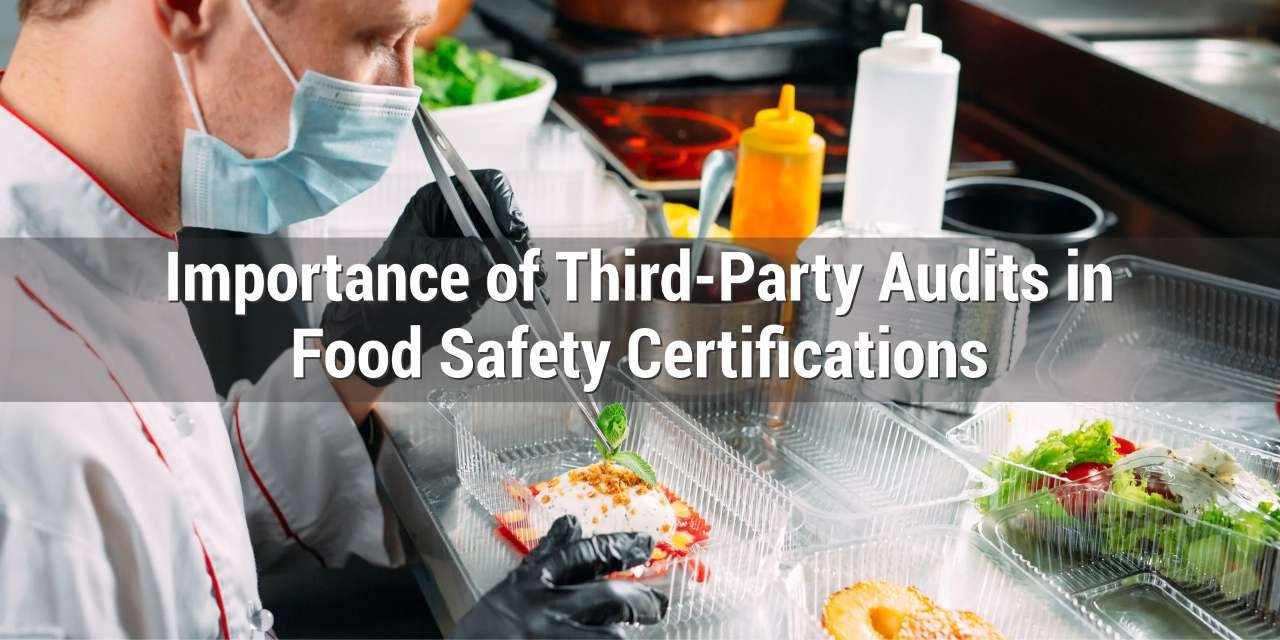Food safety remains a cornerstone of trust in the global food industry, ensuring that consumers receive products that are safe, hygienic, and free from contamination.
To uphold these standards, regulatory agencies and industry bodies have developed rigorous food safety certification programs. Kajal Dalvi explores the evolution of food safety certifications and the critical role third-party audits in food safety play in strengthening food safety systems worldwide.
Food safety is a paramount concern in the food industry, guaranteeing the safety, hygiene, and absence of harmful contaminants in the food we consume. To uphold these high standards, various organizations and regulatory bodies have introduced food safety certifications. These certifications aid food manufacturers, suppliers, and distributors in adhering to stringent hygiene and safety regulations. A key element of these certifications is the third-party food safety audits, which play a crucial role in confirming whether food businesses are meeting the necessary standards.
Evolution of Food Safety Regulations
The concept of food safety regulation is not a recent development, but a tradition that dates back centuries. Early civilizations imposed basic quality standards on food production, laying the foundation for the modern food safety certification systems that emerged in the 20th century with the rise of industrial food production and global trade. The establishment of organizations such as the Codex Alimentarius Commission by the Food and Agriculture Organization (FAO) and the World Health Organization (WHO) in 1963 further solidified this tradition, setting the foundation for global food safety standards.
As the food industry evolved, various food safety management systems were developed to meet specific industry needs, leading to the introduction of third-party audits for food safety certifications. These audits became essential as food manufacturers sought independent verification of compliance with regulatory and certification requirements. Today, third-party audits are a cornerstone of food safety certification schemes, ensuring transparency, credibility, and most importantly, consumer trust.
Types of Food Safety Certifications
There are several food safety certifications that businesses can obtain to demonstrate compliance with food safety standards. Some of the most recognized ones include:
GFSI-Recognized Certifications: The Global Food Safety Initiative (GFSI) benchmarks programs such as:
- FSSC 22000 (Food Safety System Certification 22000): Based on ISO 22000 with additional requirements.
- BRCGS (British Retail Consortium Global Standards): Widely used by retailers and manufacturers.
- SQF (Safe Quality Food Program): Ensures compliance with global regulations.
- IFS (International Featured Standards): Commonly used by European retailers and suppliers.
- Global G.A.P.: Focused on agricultural products and good farming practices.
FSMA (Food Safety Modernization Act): U.S. regulation that prioritizes prevention over reaction, requiring compliance programs like Preventive Controls for Human Food (PCHF), Foreign Supplier Verification Program (FSVP), and the Produce Safety Rule.
Other Certifications:
- ISO 22000: An international standard integrating HACCP principles.
- HACCP Certification: Identifies and controls hazards in food production.
- GMP (Good Manufacturing Practices): Ensures hygiene, sanitation, and operational controls.
- In each of these programs, third-party food safety audits conducted by independent certification bodies validate whether a company meets the required standards.
The Importance of Third-Party Audits in Food Safety
Third-party audits serve as an objective and unbiased mechanism to verify a company’s adherence to food safety certification requirements. Unlike internal audits or second-party audits conducted by customers, third-party audits are carried out by accredited bodies, ensuring credibility and impartiality. Their importance can be understood through various dimensions:
- Ensuring Compliance with Certification Standards: They help businesses comply with both national and international regulations, reducing the risk of violations.
- Enhancing Consumer Trust: Certification backed by independent audits reassures consumers that products meet high-quality standards.
- Facilitating Global Market Access: Many retailers require suppliers to hold GFSI-recognized food safety certifications verified by third-party audits.
- Identifying Food Safety Risks: The audit process highlights hazards, helping businesses implement corrective measures and prevent recalls.
- Encouraging Continuous Improvement: Third-party food safety audits foster a culture of improvement, ensuring that companies refine processes and adopt better technologies.
Challenges Associated with Third-Party Audits
While third-party audits are essential, they also present certain challenges:
- Cost and Resource Intensive: Especially for SMEs, audit preparation and certification fees can be expensive.
- Complexity of Multiple Certifications: Businesses complying with several programs may face overlapping audit requirements.
- Audit Fatigue: Repeated audits can place operational strain on teams.
- Interpreting Standards: Different auditors may interpret food safety certification compliance audits differently, causing inconsistencies.
The Future of Food Safety Audits
The landscape of third-party audits in food safety is evolving with technology. The integration of remote auditing, blockchain for traceability, and digital compliance tools promises efficiency and cost savings. Global harmonization efforts are also underway to reduce redundant audits, addressing food safety audit challenges and solutions.
As consumer awareness and regulatory scrutiny increase, third-party audits will remain indispensable, not just for compliance, but as a strategic tool for global food businesses to enhance trust, ensure safety, and maintain competitiveness.
Conclusion
Third-party audits are a cornerstone of modern food safety certification systems, providing an unbiased evaluation of compliance with industry standards. By ensuring regulatory adherence, enhancing consumer trust, and encouraging continuous improvement, these audits strengthen the credibility of certifications like HACCP, ISO 22000, FSMA, and GFSI-recognized programs.
Despite challenges such as cost and complexity, the benefits of third-party food safety audits, from global market access to improved safety standards, far outweigh the drawbacks. As the industry embraces innovation, third-party audits will continue to shape a safer, more transparent global food supply chain.
Third-Party Audits in Food Safety Certifications: FAQs
Third-party audits provide independent verification that food businesses meet required safety standards, ensuring compliance, transparency, and consumer trust.
They help companies comply with regulations, access global markets, reduce food safety risks, and enhance brand credibility.
Widely recognized certifications include HACCP, ISO 22000, FSSC 22000, BRCGS, SQF, IFS, GlobalG.A.P., and FSMA compliance programs.
They reassure consumers that food products are safe, hygienic, and manufactured under strict quality standards, building long-term trust.
Businesses often struggle with high costs, overlapping certification requirements, audit fatigue, and varying interpretations of standards.
The future includes digital auditing tools, blockchain-based traceability, remote audits, and greater harmonization of global standards.
*The author is a food safety professional with experience in implementing and managing food safety standards such as FSSC 22000, BRC, and ISO. She can be reached at kajal.foodsafety@gmail.com
Have a news or topic to share with industry? Write to us editorial@pfionline.com
















